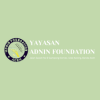AUTHORGUIDELINES
Article submitted for publication have to check to the following guidelines:
- Manuscript must use the Journal Template <https://s.id/AIMJ_Template>
- Manuscript should discourse the themes of field study reports, education, law, economics, politics.
- Manuscript must be well-written in British English or American English; thus, using professional proofreader is really recommended before submitting.
- Article must type in one-half spaced on A4-paper size, using Times New Roman font 12;
- Paper length is about 6,000-8,000 words count; thus, only manuscript following word counts length will reach the review stages;
- All submission must include a 250 words of abstract written in British English or American English.
- All submission must have file in OpenOffice, Microsoft Word, RTF, or WordPerfect document file format;
- Full name(s) of the author(s) must be stated, along with his/her/their institution and complete address; and the maximum additional author and co-author are 5 (FIVE) in a manuscript.
- The body of article must follow standard of scientific publication, using IMRaD standard (Introduction, Methods, Results, and Discussion) and sum up with conclusion;
- The length of title is no more than 14 words.
- Regarding the diversity author policy, author or co-author who have published in an issue, their manuscript will be ONLY considered to review and may publish in the next following year.
- Manuscript that not obeying the author guidelines will be declined and not proceeded to next stage of review.
- The examples of footnote reference and bibliography as shown below:
Footnote:
The Author have to use Mendeley citation software, and the citation model should be Chicago Manual Style (Fullnote) automatically by Mendeley. Author should use at least 25 references (the latest in the past five years). The footnotes used in references in this journal are not only used as source credit for the reference, but it is highly recommended for the author to write some notes, arguments, or brief reviews in the footnotes. At the end of the paragraph, the author/s should end with a comment on the significance concerning identification of the issue and objective of the research.
Example of Bibliography:
Dwiyanti, Ita. “The Criminal Penalties for LGBT in a Human Rights Perspective.”Semarang State University Undergraduate Law and Society Review 1, no. 1 (2021): 1–18. https://doi.org/10.15294/lsr.v1i1.49835.
Faisal, Sanapiah. Format Penelitian Sosial. Jakarta: Raja Grafindo Persada, 2005.
Niravita, Aprila. “Social Injustice in the Industrial Revolution 4.0.” Indonesian Journal of Advocacy and Legal Services 1, no. 2 (2020): 164. https://doi.org/10.15294/ijals.v1i2.36509.
Nugraheni, Prasasti Dyah. “The New Face of Cyberbullying in Indonesia: Howe Can We Provide Justice to the Victims?” The Indonesian Journal of International Clinical Legal Education 3, no. 1 (2021): 57–76. https://doi.org/10.15294/ijicle.v3i1.43153.
Copyright Notice
- Authors retain copyright and grant the journal right of first publication with the work simultaneously licensed under a Creative Commons Attribution-ShareAlike 4.0 International License (CC-BY-SA) that allows others to share the work with an acknowledgment of the work's authorship and initial publication in this journal;
- Authors are able to enter into separate, additional contractual arrangements for the non-exclusive distribution of the journal's published version of the work (e.g., post it to an institutional repository or publish it in a book), with an acknowledgment of its initial publication in this journal;
- Authors are permitted and encouraged to post their work online (e.g., in institutional repositories or on their website) prior to and during the submission process, as it can lead to productive exchanges, as well as earlier and greater citation of published work (See The Effect of Open Access).








